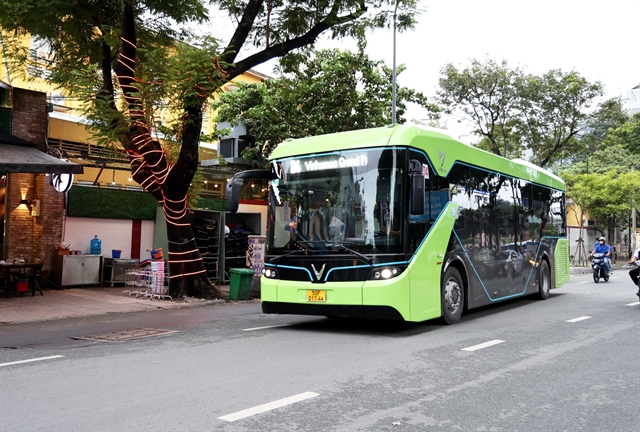 Environment
Environment

The southernmost province of Cà Mau is speeding up efforts to prevent erosion to ensure sustainable development and adapt to climate change.

|
| A section of the western sea dyke in Cà Mau Province’s Trần Văn Thời District. – VNA/VNS Photo Huỳnh Anh |
CÀ MAU – The southernmost province of Cà Mau is speeding up efforts to prevent erosion to ensure sustainable development and adapt to climate change.
In recent years erosion along its rivers, canals and coasts have occurred not only in the rainy season but also in the dry season because of the increasing impact of climate change and human factors.
In Năm Căn District, one of the coastal districts hardest hit by river erosion, there have been around 20 instances this year, which caused damage to properties.
They occurred mostly along major rivers with strong flows, especially in Năm Căn Town and the communes of Hàng Vịnh, Hiệp Tùng, Đất Mới and Tam Giang.
On June 16 a 30-metre stretch was eroded in Tam Giang, which affected three charcoal making kilns.
Nguyễn Thành Đạt, their owner, said the erosion occurred rapidly and caused him losses of VNĐ80 million (US$3,500).
Another occurred in Năm Căn Town’s Hamlet 7 a few days later, causing three houses to slide into the river.
Erosion often occurs at night, also threatening the safety of people, according to locals.
In Năm Căn District, people normally live along rivers, and most of their houses are poorly constructed or makeshift. The district Steering Committee for Natural Disaster Prevention and Control, Search and Rescue said therefore they would be damaged when there are natural disasters like storms.
The district borders the sea, and so riverine erosion occurs frequently due to high tides and strong currents.
Its dyke system lacks investment and so is easily breached when there is a tropical depression or high tide.
Trần Đoàn Hùng, deputy chairman of the district People’s Committee, said the frequency and scale of erosion increased in recent years, and so the top priority now would be for preventing it.
The district has petitioned the province People’s Committee to build embankments along some major rivers to prevent erosion.
It regularly conducts inspections to identify erosion – prone areas and has increased advocacy to enhance people’s awareness of the threats to their property and safety and how to safeguard them, including by putting up warning signs in risky areas.
The district has identified 25 new areas this year with a total length of 50km.
In another district also severely hit by river erosion, Đầm Dơi, there have been 30 cases this year, which have damaged houses and infrastructure.
The province has had 61 cases affecting a total of more than 1km so far this year, according to the province People’s Committee.
Of its 254km of coast, 150km suffer from severe erosion, with the sea eating away 20 – 50 metres of land each year adding up to 450ha.
The province has built more than 50km of sea dykes in the last 10 years.
The biggest difficulty in protecting the coast from erosion is the lack of funds since private investment is not allowed, according to the province People’s Committee.
The province is soliciting investment in the marine economy accompanied by construction of soft dykes, renewable energy and aquaculture in coastal areas, and is creating mudflats for mangrove forests to prevent erosion.
Lê Văn Sử, deputy chairman of the province People’s Committee, said to develop Cà Mau and the delta’s other provinces sustainably and adapt to climate change, the Government should offer incentives for investing in infrastructure for rural development and agriculture.
The province needs investment in infrastructure since its existing transport systems of waterways and roads are inadequate and not well linked, according to the official. – VNS




